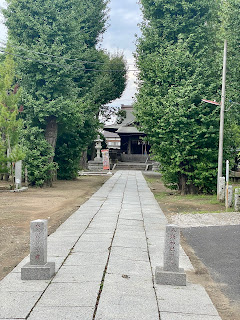The next stop was Yasaka Shrine, which is next to the Festival Float Museum.
Information from the website:
Following the example of Kyoto’s Yasaka Shrine (formerly called Gion Shrine), Katori’s Yasaka Shrine began as a facility to honor Gozu Tennō, the deity of pestilence believed to cause epidemics, who was both feared and propitiated for protection. However, in 1868, an edict to separate Shinto and Buddhism was issued. As such, facilities sacred to Gozu Tennō were renamed as Yasaka Shrine and Gozu Tennō was replaced by Susanoo-no-Mikoto, the Shinto equivalent of Gozu Tennō.
Every year on the Friday, Saturday, and Sunday immediately following July 10th, Yasaka Shrine holds the Sawara Grand Summer Festival, also known as Gion Festival, during which 10 splendid floats parade the streets. The Sawara Grand Summer Festival, along with its autumn counterpart, the Sawara Grand Autumn Festival, organized by Suwa Shrine, are designated as Important Intangible Folk Cultural Properties by the government. Yasaka Shrine is about a 10 minute walk from JR Sawara Station.
Every year on the Friday, Saturday, and Sunday immediately following July 10th, Yasaka Shrine holds the Sawara Grand Summer Festival, also known as Gion Festival, during which 10 splendid floats parade the streets. The Sawara Grand Summer Festival, along with its autumn counterpart, the Sawara Grand Autumn Festival, organized by Suwa Shrine, are designated as Important Intangible Folk Cultural Properties by the government. Yasaka Shrine is about a 10 minute walk from JR Sawara Station.







































2 comments:
Hi Pamela: Love the head with the long nose, you have some very interesting trips to share with us always.
Catherine
A deity of pestilence? How interesting! I wonder if this place saw a lot of traffic during the pandemic.
Those floats are HUGE! I wonder how much they weigh. The must be difficult to move about.
Post a Comment